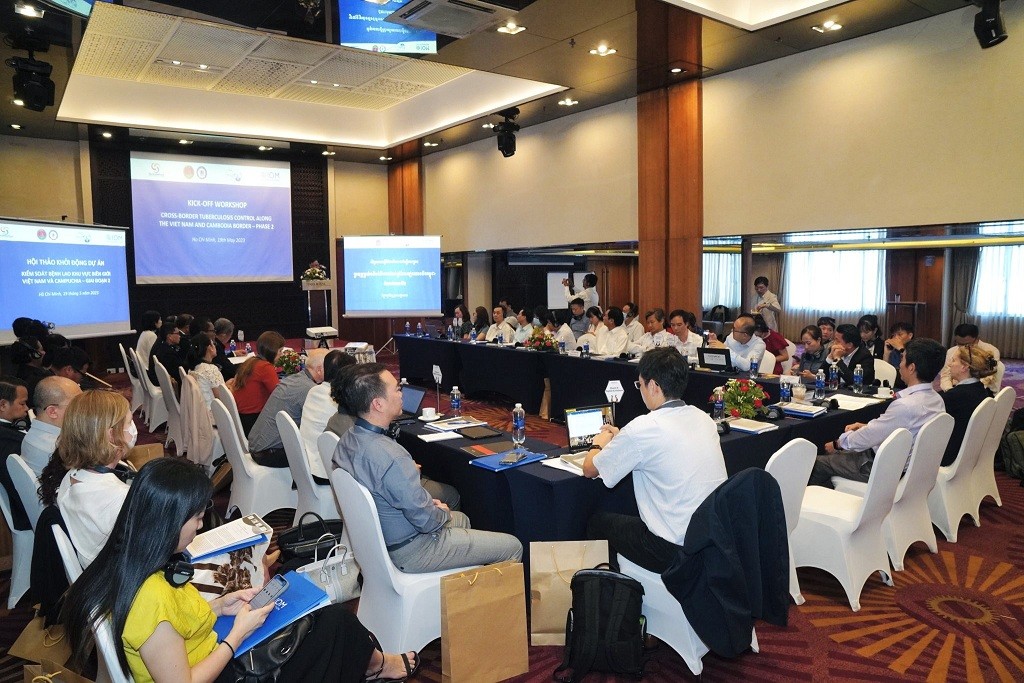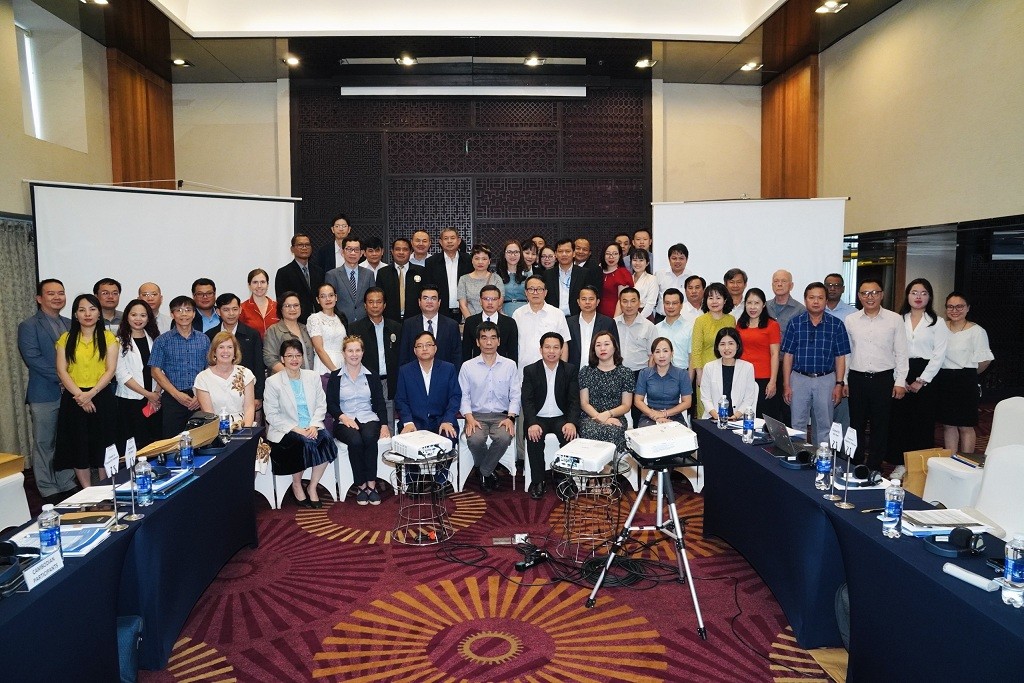
Improving access to tuberculosis diagnosis, treatment for migrants along Vietnam-Cambodia border
Latest
 |
| The kick-off ceremony of the Phase 2 project on 'Cross-border tuberculosis control along the Vietnam and Cambodia border' on May 19. (Sourrce: IOM) |
The International Organization for Migration (IOM) has announced the launched the Phase 2 project on “Cross-border tuberculosis (TB) control along the Vietnam and Cambodia border" in partnership with the National Tuberculosis Control Program (NTP), National Lung Hospital, Ministry of Health (MOH) Vietnam and National Centre for Tuberculosis and Leprosy Control (CENAT) of Cambodia, with financial aid from the Global Fund to Fight AIDS, Tuberculosis and Malaria.
The project aims to improve access to TB diagnosis and treatment for cross-border migrants in the border areas between Vietnam and Cambodia and strengthen cross-border partnership and collaboration between health authorities in four provinces of An Giang and Tay Ninh (Vietnam), Svay Rieng, and Takeo (Cambodia).
Cross border migrants often face difficulties in accessing healthcare services due to a lack of health insurance, language barriers, limited understanding of the health-care system in the destination country, and discrimination. These obstacles may cause delays in seeking TB diagnosis and treatment, as well as TB treatment interruption resulting in poor treatment outcome and drug resistant TB (MDR-TB).
In the WHO Global TB Report 2022, Vietnam remained one of 30 highest burden countries globally with TB and MDR-TB, whereas Cambodia has phased out of the WHO global list of 30 countries with high TB burden (2021-2025) and been on TB watchlist.
In 2020, IOM in partnership with NTP Vietnam and CENAT Cambodia conducted operational research to better understand the barriers to accessing and utilizing TB diagnosis and treatment among cross-border migrants and their enabling factors in the aforementioned four provinces.
The results of this research provided a platform for relevant public health officials of the two governments to develop practical interventions for collaborative TB control in Vietnam and Cambodia border areas. It also highlighted the limited collaboration and partnerships in the border area, which have significant scope for development and improvement to tackle cross-border TB issues more effectively. Importantly, health care providers participating in the study also expressed a willingness to work together to improve transnational collaborative mechanisms.
 |
| In Vietnam, IOM is also working closely with the Migration Health Working Group (MHWG), an inter-ministerial working group established by MOH, to address important migrant health issues. (Source: IOM) |
IOM Chief of Mission, Ms Park Mihyung, emphasized that ensuring migrant health requires holistic efforts between countries involved in their migration process.
“It is very important that we develop and adapt a migrant-sensitive referral system for cross-border migrants with TB and facilitate the establishment of local TB and HIV/AIDS taskforces in An Giang, Tay Ninh, Svay Rieng, and Takeo provinces. That way, we can make sure that the treatment of TB for cross-border migrants remains uninterrupted through all health networks across borders. I also welcome the cooperation of other non-health sectors like the immigration, border security, economic and development to make sure that we all understand the importance of healthy migrants for healthy economies”, she added.
Ensuring the health of migrants is recognized as a key global health goal by World Health Assembly and a tenet of Sustainable Development Goals (SDG). The project is also linked with Decision No. 5608/QD-BYT on the deployment plan of the Global Compact for Migration issued by a MOH in December 2020.
In Vietnam, IOM is also working closely with the Migration Health Working Group (MHWG), an inter-ministerial working group established by MOH, to address important migrant health issues and coordinate with relevant stakeholders to foster the design and implementation of migrant-friendly health interventions and policies.













